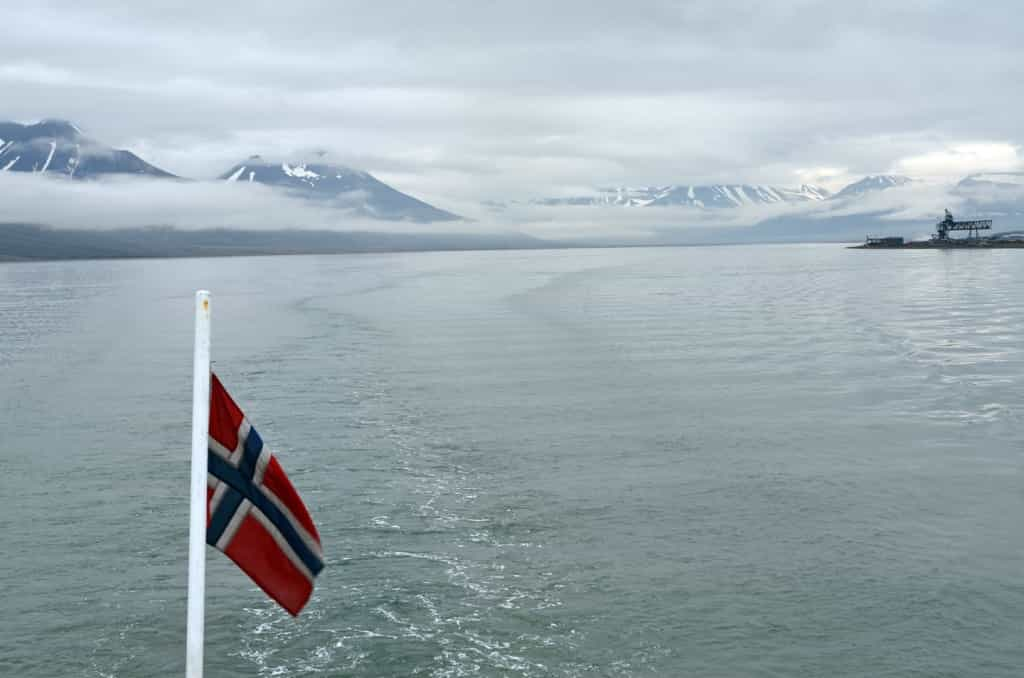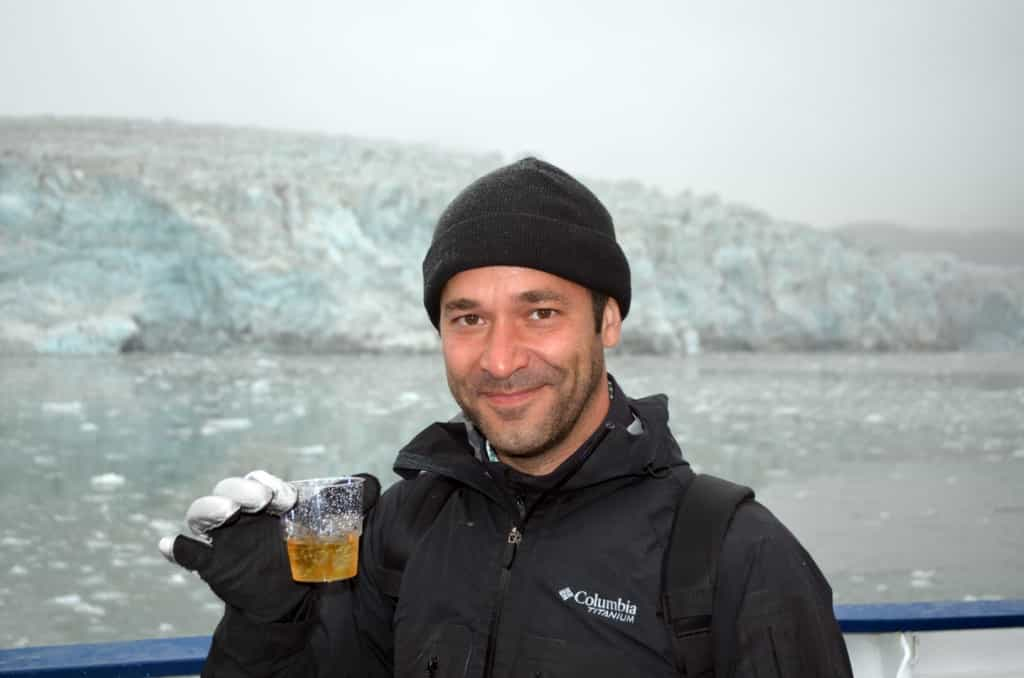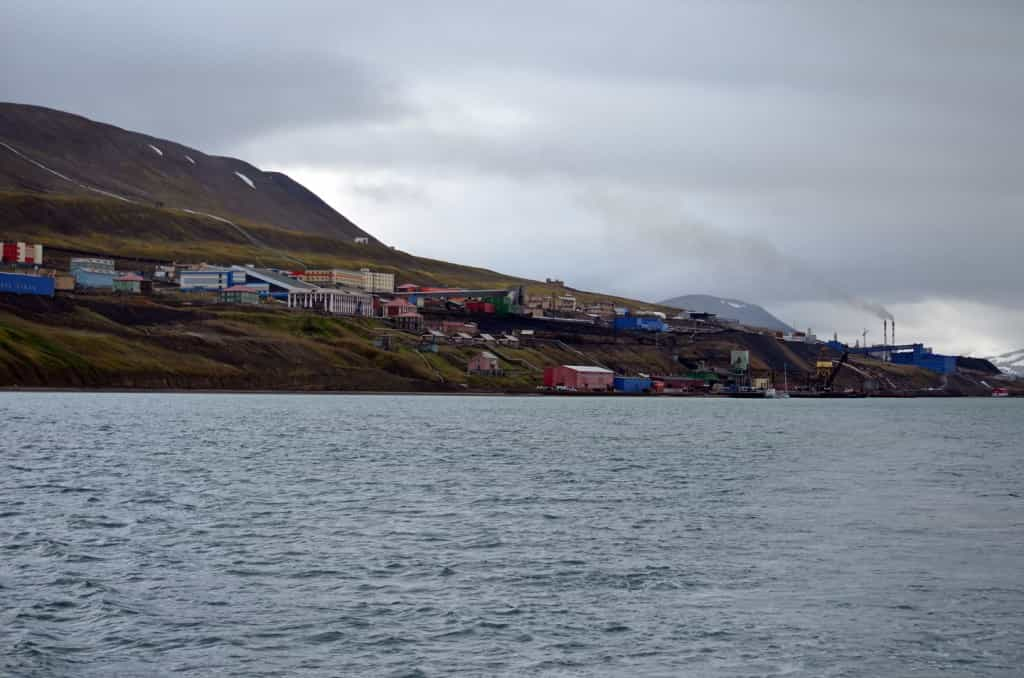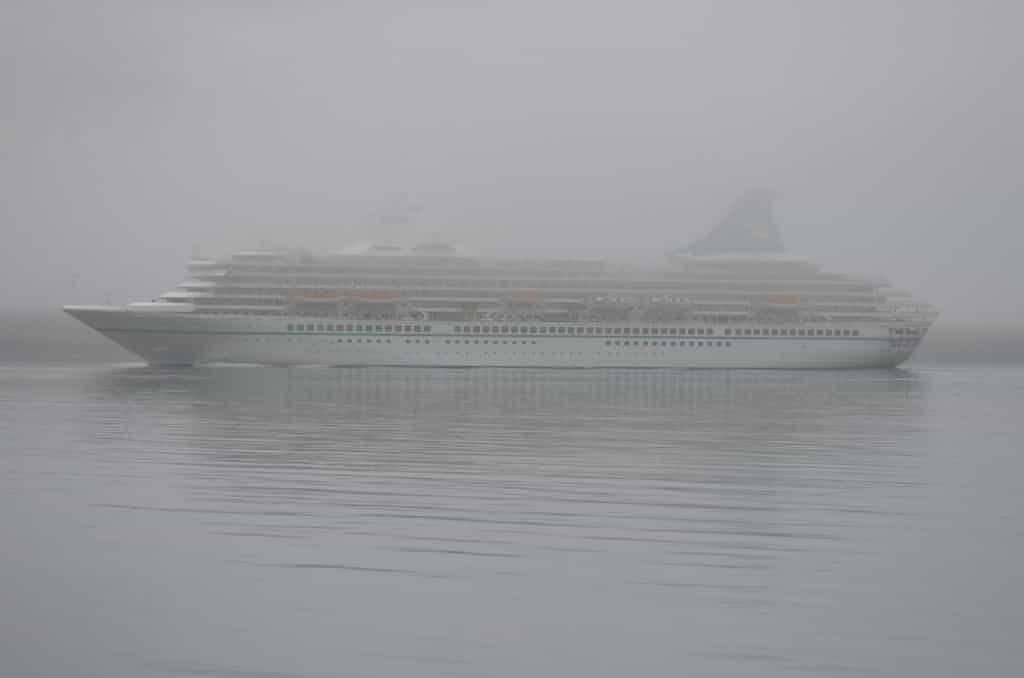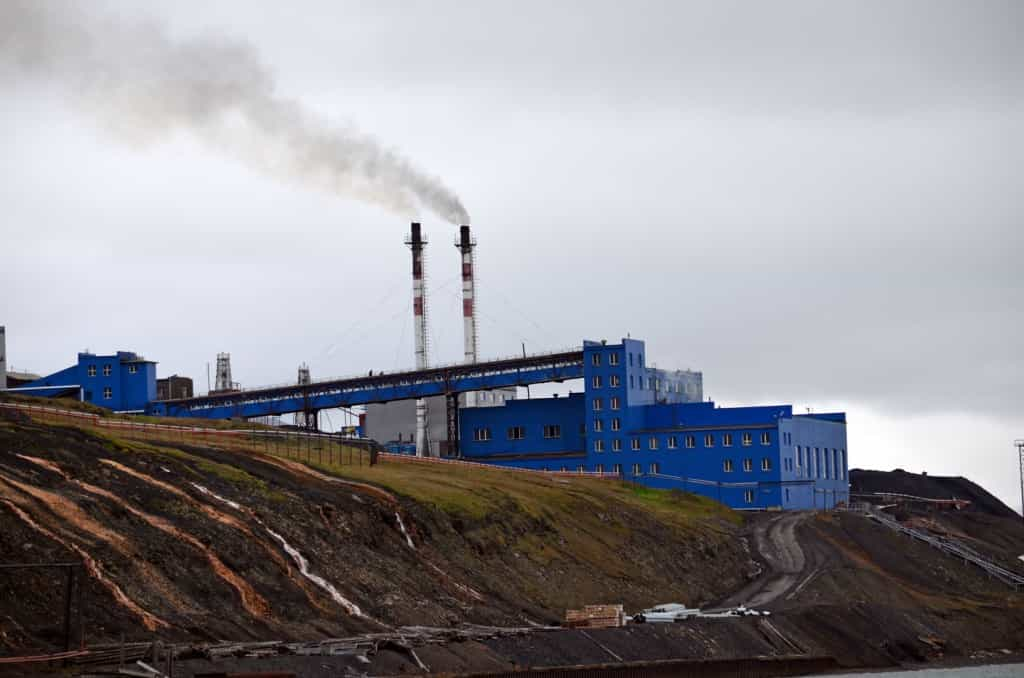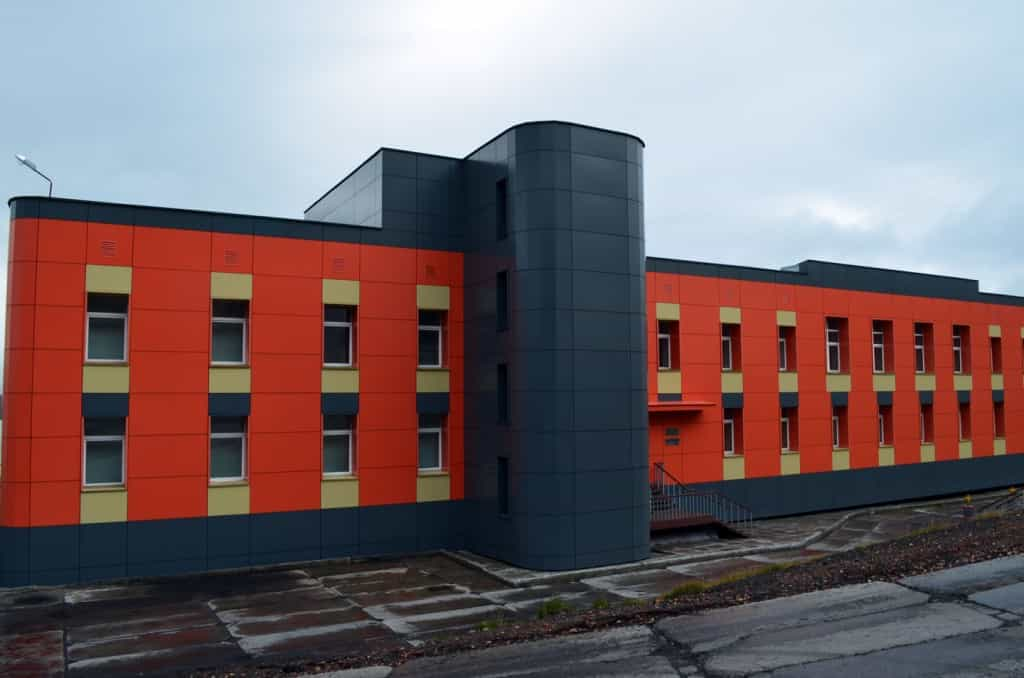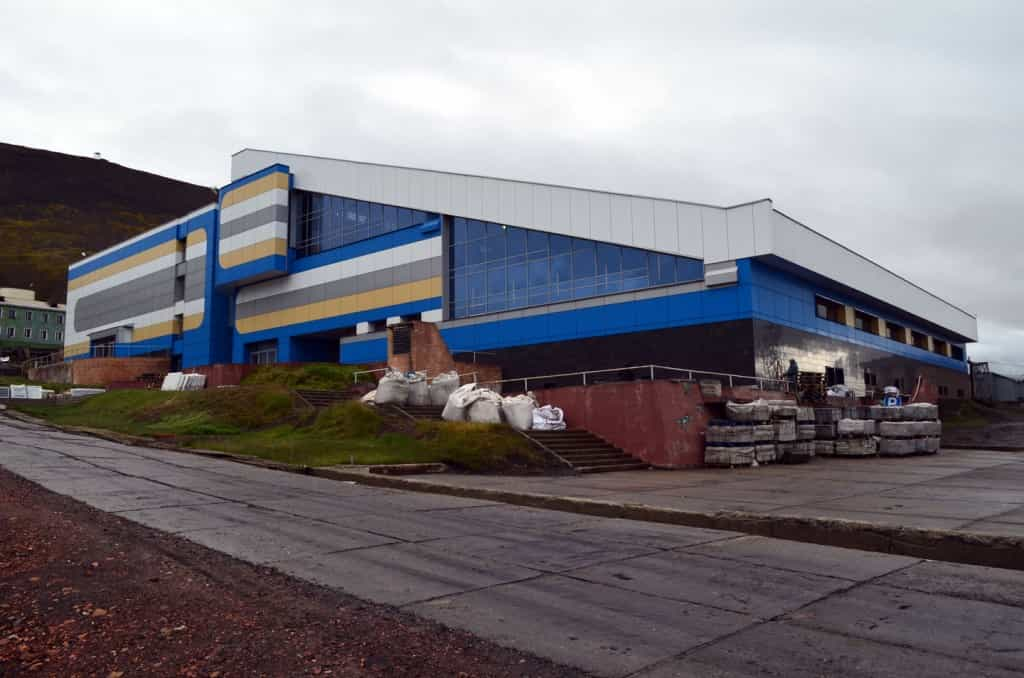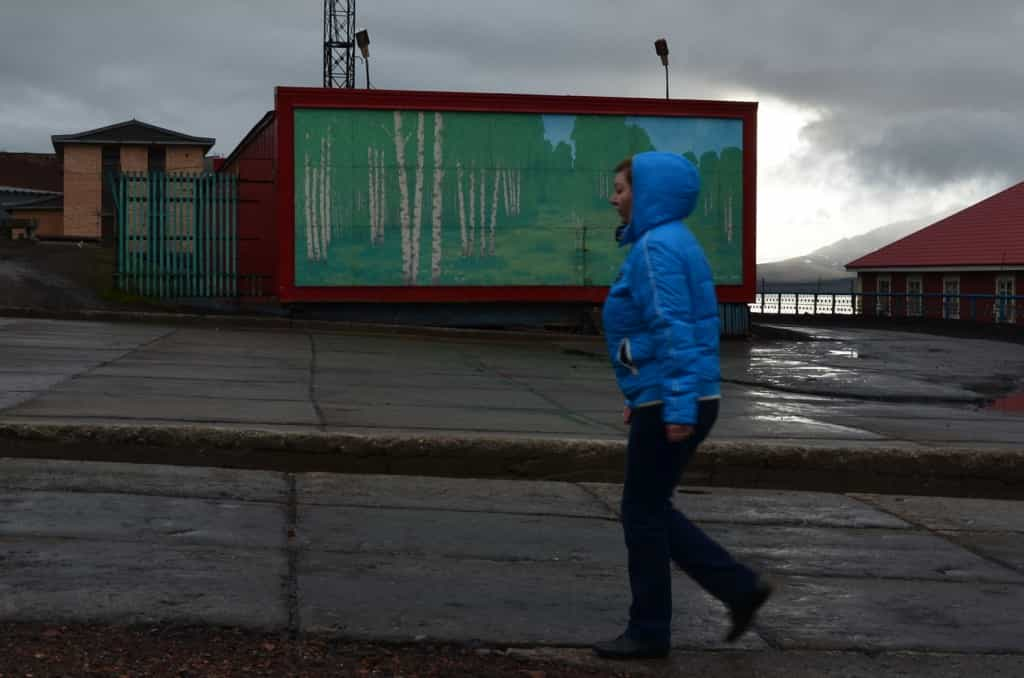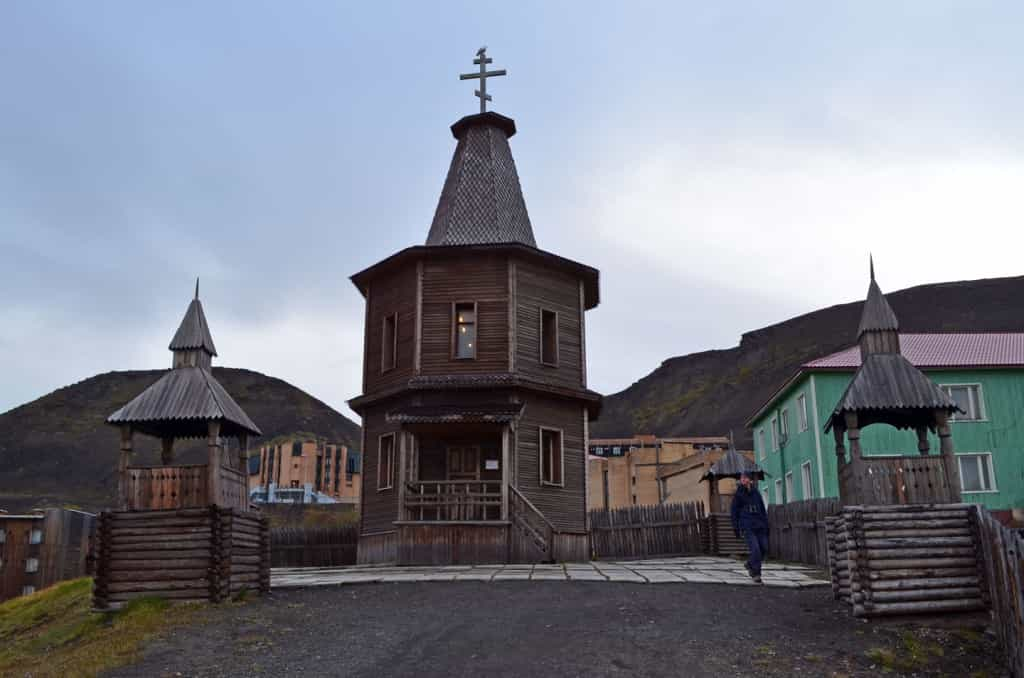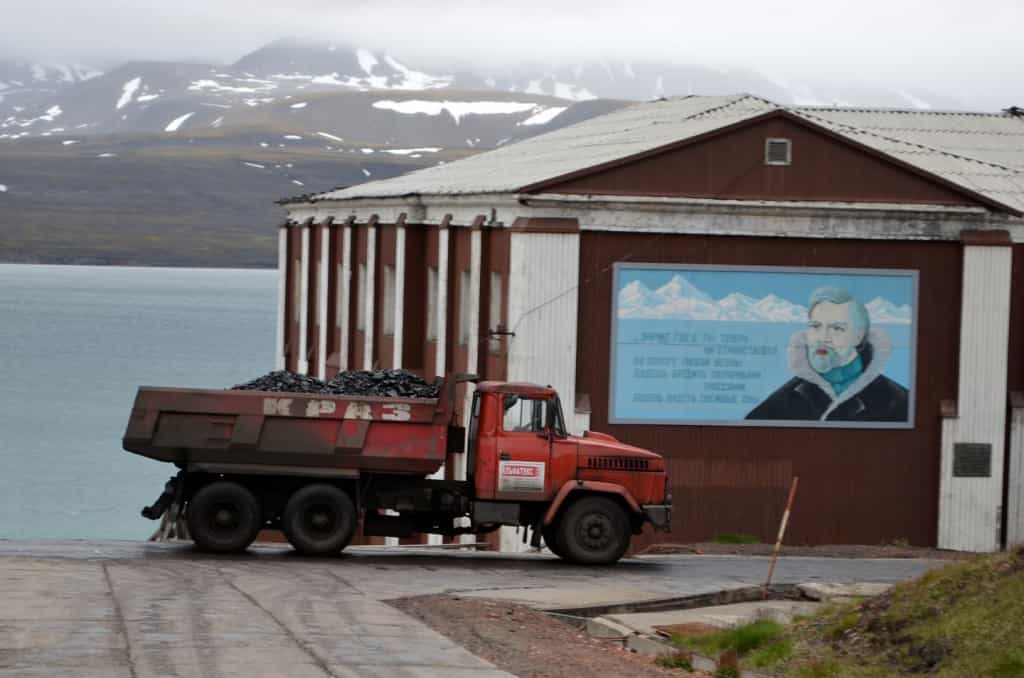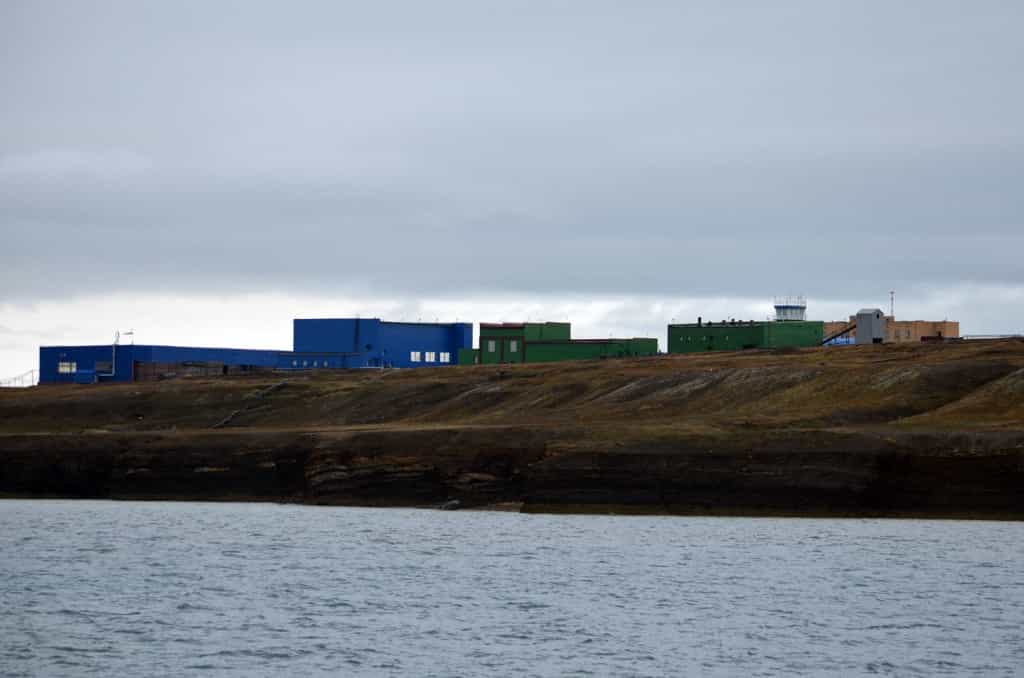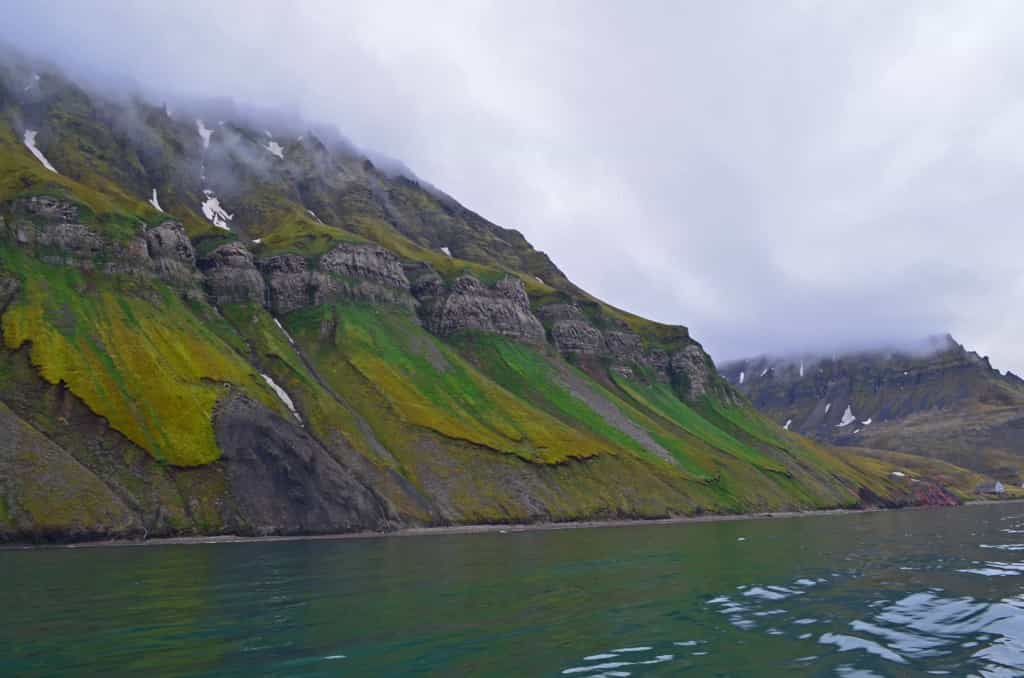For some time now, I had been hoping to make the hike from Longyearbyen, the most northern town in the world, to the Russian mining settlement of Barentsburg, about 50 km away. Unfortunately, because of the dangerous and remote terrain, the threat of polar bears and the difficulty of communication, doing the trip alone would not be safe at all. Since finding a partner for such a hike is not very easy, I opted for the easy solution, a day trip by boat.
Leaving Longyearbyen in the morning: it took a couple of hours to reach the first site.
I spent part of the time watching the local birds, who would glide extremely close to the water, I presume to try and catch a fish by surprise (something I did not witness).
Approaching the Esmark glacier, we found the bay quite full of floating ice.
The guys who run the tours go several times a week and mentioned that the glacier have been cracking and falling in the ocean very fast in the past week.
If you have ever taken a boat tour to see a glacier, you know what comes next. The same thing happened to me in Iceland. The crew hauled up some ice. What for?
For drinks, of course!
Whiskey on the rocks. The whiskey was made during Obama’s first term in office. The water in that ice was last in liquid form approximately 8,000 years before the first term in office of Julius Caesar.
Then a Filipino cook barbecued some whale. A typical day at the office for me. Jim, the Norwegian guide, had exactly my kind of humour. “We do this everyday, but thankfully this one is the last of its kind, so tomorrow we can move on to something else”. Seriously, it’s minke whale. The harvest is heavily regulated and the specie is not threatened at all, with more than half a million in the Arctic and only a few hundred caught each year. The tender red meat has the texture of a veal escalope and a gamy, almost liver-like taste.
Eventually, we saw Barentsburg in the distance. At first, it was the gloomy, throwback to the past, end of the world place I thought it would be. All of Svalbard is under Norwegian sovereignty, as guaranteed by the 1925 Svalbard Treaty. But the same treaty provides all the signatories the right to establish settlements and exploit the resources of the area. So Canada or the USA could establish a city there. But then again, so could Monaco and Afghanistan. I would love to see an Afghan settlement north of the 78th parallel! But seriously, only Norway and Russia have real settlements, with other countries like Poland maintaining small research bases.
So Russia has this town, acquired from the Dutch a long time ago. 1,200 people used to live here in the days of the Cold War. Today the population is around 400. Most of the settlement is contained in this photo.
Before landing, this abomination appeared out of the fog. I could not believe I would be visiting in the company of thousands of cruisers! Luckily, they have no ability to dock such a ship, so the vessels simply did a long u-turn as the passengers looked on from a distance.
So what can I say about the place? I had only seen online pictures of desolation, abandonment, near misery. And I can still show all of this to you.
The decaying industrial infrastructure.
A man walking away from his crumbling apartment block.
The dismal hospital.
The terrible hotel, or whatever remains of it.
The recreational facilities for the children.
Workers spending the day resting on a shovel.
And the settlement’s latest communications technology.
This image may have been true just a few years back, but it no longer is. In fact the image that I just painted is a complete lie. I can still show it to you because in Svalbard, demolition doesn’t seem to be popular. Even in rich Norwegian Longyearbyen, when a new building is built, residents move out of the old decaying building and simply board it up. With unlimited land and few residents, why go through the expense of demolition, unless it poses some threat? In reality, massive amounts of money have been recently poured in Barentsburg, as Russia rebuilds the symbol of its presence in the high Arctic. A more honest pictures goes like this:
Well kept industrial facilities.
A school that is not new, but was repainted 2 years ago by students from the St-Petersburg Academy of Arts, depicting the skyline of Northern European cities and the wildlife of the Arctic.
A 2 year old hospital equipped with German-made medical instruments.
A year old hotel that still smells of fresh paint, with a barmaid who speaks English and Dyson Airblade hand dryers in the bathrooms.
Children’s – and adult’s – recreational facilities that include a small concert hall, a half olympic pool, a football stadium, etc. For 400 people!
Construction workers who are obviously involved in major upgrades to the basic infrastructure.
And communication systems which go a little beyond the rotary dial phone.
So a few facts. There are no real permanent resident in this company town (or maybe a handful). Workers, mostly Ukrainians, sign a two year contract, after which they get paid and go back where they came from for two months. If they wish, they can then renew the engagement. Some are here with their families. Because they miss the scenery from back home, murals of forests are painted on some of the facades. I bet it feels just like being home.
No idea what this is called, although I once rode something similar in Florida’s Everglades.
The place seems more rainy than Longyearbyen, and I even saw mushrooms.
In case of war, remove flag of choice.
From the docks to the settlement, there are 250 steps. The locals will drive you if you are old and frail. It will take 45 seconds but it will cost about $10.
A lot of the old-style decoration commemorates the Communist era, such as this mural on a building where the residents used to raise cows. They still raise pigs and there was a time when they would export eggs to Longyearbyen. During the Cold War, residents of strategic towns like this one, Pripyat (Chernobyl) or secret military cities often had a better standard of living and better infrastructure than the rest of the Soviet Union. This was certainly the case in Barenstburg before it was left to decline between 1991 and about two years ago. But the situation has taken a recent 180 turn, and either now or soon, the workers will probably have the most infrastructure per capita of any small Russian mining town!
They really, really didn’t touch the signs after the end of the Cold War. On the mountain behind Lenin’s bust (the second northernmost in the world, after the abandoned settlement of Pyramiden), a communist star and the message “Peace to the World”. In the front, a sign to commemorate the 1974 erection of the first “skyscraper” (their word, not mine) in the Arctic. It reads: “Our goal is communism”.
I don’t know what this is, but the very Soviet style monument seems to have been erected this year!
And as in many post Soviet places, the religious revival. This church was built in 1996, to commemorate the loss of 141 lives in the crash of a Vnukovo Airline flight inbound from Russia at Longyearbyen airport.
So, why all this? Coal extraction? No, politics. A statement about the country’s presence in the Arctic. A lot of the coal extracted is apparently not very good and gets piled up near the town. But Russia has a town above the 78th parallel and increasingly, it looks good and important. Even in Longyearbyen, rich Norway subsidizes its northernmost town, obviously for political and / or strategic reasons, because the economics of it make no sense. So Russia does exactly the same thing Norway does (and Canada – or at least talks about it): build northern infrastructure beyond what is necessary, so that in the event of future development of Arctic resources, you have a better claim, established by your historical presence. Why Barentsburg is a little funny is because instead of admitting this, Russia tries to cloak it in secrecy in a way that is funny to many westerners.
Our guide, Nastya (nervously looking at her watch), took us on a 25 minute tour designed to allow no time whatsoever for questions. Reciting a blurb at a certain location, she would then walk off to the next place at full speed, start talking as soon as people arrived and leave again. Eventually, she announced the tour was over, did a 180 turn and disappeared. I was the only one who talked to her, because I followed her frenetic pace between places. Unfortunately, she was clearly a graduate of the KGB School of Not Answering Questions (KGB-SNAQ).
Knowing most workers come from Ukraine, I asked her which part of the country they were from. Perfect evasive answer. I tried again, in a more subtle way. “The events in Ukraine must concern them. Are they worried about their job, or the situation back home?” “Yes, many even asked if they could take their families up here” Bingo! So she was a KGB graduate, but elementary level only. Obviously, ethnic Ukrainians in Lviv would not be considering moving their family to a Russian settlement in the high Arctic, so the workers are ethnic Russians from east Ukraine. So what? Well exactly, so what? There is absolutely nothing wrong with ethnic Russians from Ukraine working in Barentsburg. That’s why the place is spooky, because things seem to be hidden and secret either for no reason, or for reasons that make sense for Russia, but which I do not understand. Like during my trip to North Korea, where the guides would answer questions about electricity shortages and other problems, but the age of the Great Marshall was absolutely taboo.
I managed to learn that Nastya came from St-Petersburg, and was on her third 8 month contract for the Barentsburg tourist office. I asked what she did when not taking people on “tours”, and she said she had many, may different jobs. Since all the businesses listed on the billboard apparently share the same phone number, I am guessing “answering-all-phone-calls-that-arrive-in-English” is one of her tasks, 24 hours a day. She also mentioned that only 4 people spoke English in Barentsburg, and knowing she, her mysterious and unnamed accompanying girl, the hotel’s barmaid and probably the receptionist spoke English, I asked her if either doubled as the school’s English teacher. “No, there is a man!” abruptly came the answer. Clearly the identity of the English teacher is a matter of national security. I still can’t figure out what would drive an apparently educated, multi-lingual girl from rich St-Petersburg to go spend 24 months in the high Arctic with 400 Ukrainian coal miners.
A truck transporting the not so good coal to the piling area. The good coal is burned or shipped by boat right next to the mine pit. The mural depicts a hero of the Pomor, famed hunters from Northern Russia who have been coming to Svalbard for centuries to hunt and trap.
More mystery, the absolutely massive heliport. I have been to sovereign countries with a smaller international airport in their capital, but this currently services a single helicopter! While military activities are discouraged by the Svalbard Treaty, it is hard to imagine all countries present on the territory don’t bend the rules a little. Read my post on Longyearbyen if you want to know what I think of the American-Norwegian “polar satellite data relay station”.
And the top of the incredible: the brand new Russian Consulate in Barentsburg! What a single Consul with no staff would do in this small Russian mining village is quite mysterious. But why the building is big enough for all 400 residents to work in it is completely unbelievable. And why it needs a 3 meter steel fence all around it is simply a step in the Twilight Zone.
Maybe they took the plans of a model consulate and just copied it here? Maybe the directive was: “Make it look important”? In either case, this is the kind of surreal gesture that makes Barentsburg so different from Longyearbyen. I really wish I had spent a few days. You can go with a boat tour and return on another one a few days later, but I didn’t know this was possible. Perhaps next time, after Moscow builds a subway system there!
Seen on the way back, a very small Russian settlement abandoned a long, long time ago.
And a beautiful coastline with more vegetation than I had seen anywhere else in Svalbard.
Tomorrow: climbing to the top of Trollsteinen, my northernmost hike ever!
#Norway






















